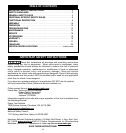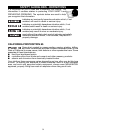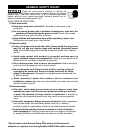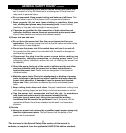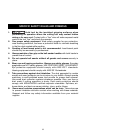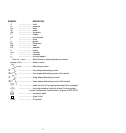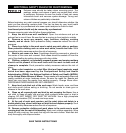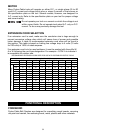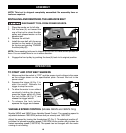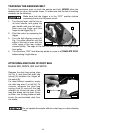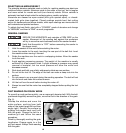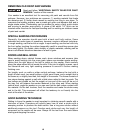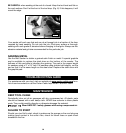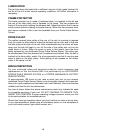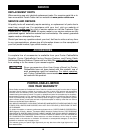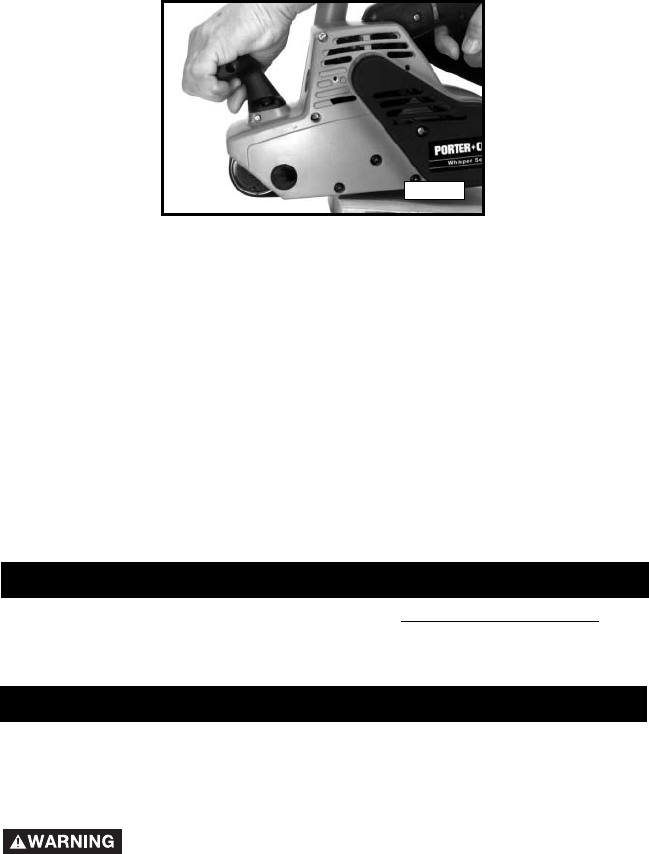
14
BE CAREFUL when sanding at the end of a board. Keep the tool level and flat on
the work surface. Don’t let the front of the tool drop. (Fig. 6). If this happens, it will
round the edge.
Your sander will work very fast and can do a thorough job in a fraction of the time
required by hand sanding. Do not rush the job. Give every surface a thorough
sanding with each grade of abrasive before changing to finer grits. Always use the
abrasive material and grit size recommended for the particular job.
SANDING METAL
Use the Belt Sander to obtain a grained satin finish on metal. A special graphite
pad is available to replace the steel shoe on the bottom of the sander. The
softness of this pad aids in blending the graining. The pad is the proper length
for sanders using a 3" x 24" belt. For sanders using shorter belt lengths, cut the
pad so that it is the same length as the steel shoe. Replace the steel shoe with
the graphite pad.
For assistance with your tool, visit our website at www.porter-cable.com
for a
list of service centers or call the Porter-Cable help line at 1-800-487-8665.
TROUBLESHOOTING GUIDE
MAINTENANCE
KEEP TOOL CLEAN
Periodically blow out all air passages with dry compressed air. All plastic parts
should be cleaned with a soft damp cloth. NEVER use solvents to clean plastic
parts. They could possibly dissolve or otherwise damage the material.
Wear ANSI Z87.1 safety glasses while using compressed air.
FAILURE TO START
Should your tool fail to start, check to make sure the prongs on the cord plug are
making good contact in the outlet. Also, check for blown fuses or open circuit
breakers in the line.
Fig. 6



